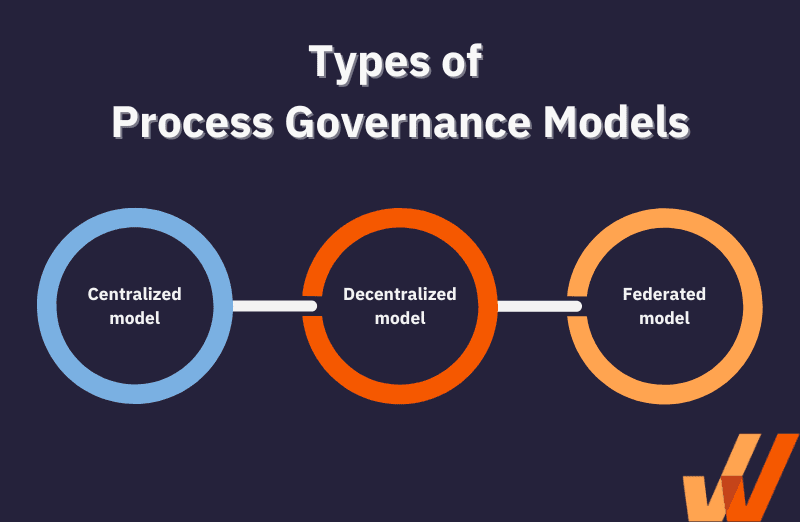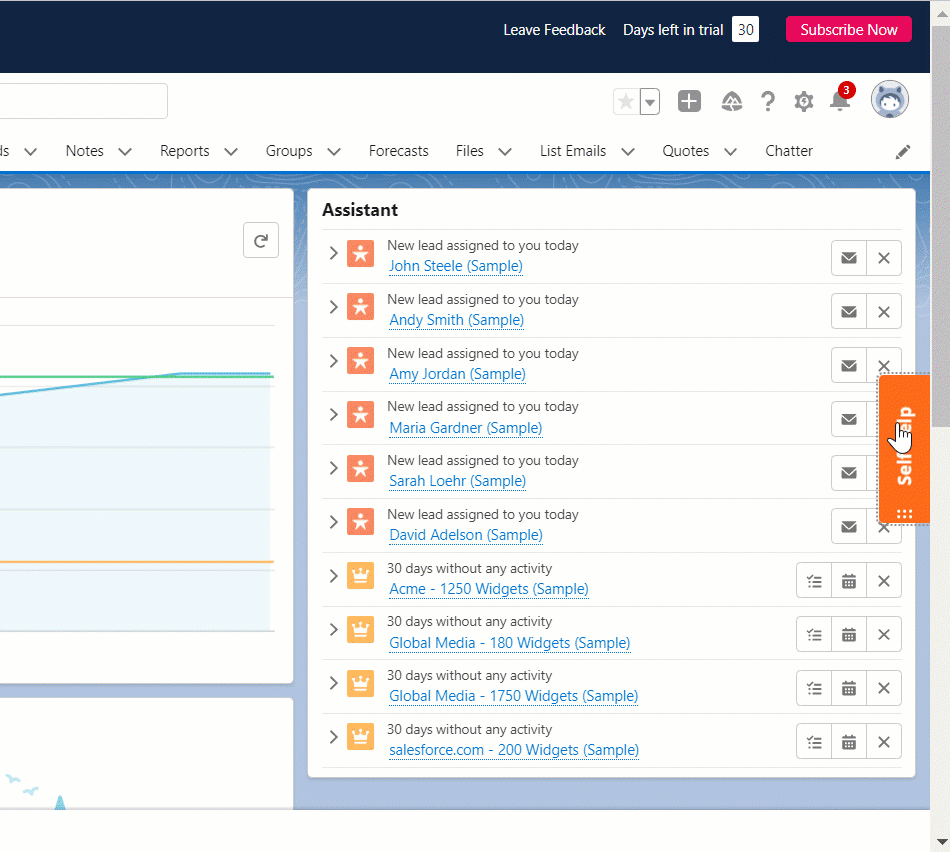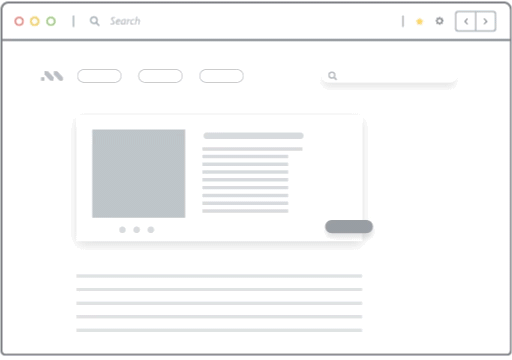
Samantha Rohn


Creating processes creates consistency, eliminates errors, and ensures things are done right the first time — but even with processes in place, how can you be sure your team is following them correctly?
Building workflows and creating contextual process documentation are just the first steps. In order to see the true benefits of robust processes, organizations must implement a process governance strategy.
Process governance oversees all aspects of process creation, implementation, and management. It ensures that processes are carried out efficiently, consistently, and in line with organizational goals and regulatory requirements.
Here’s how it works:
Let’s say you have a new process you’d like to introduce to your organization. You document the new steps your team should follow and the new process according to your company guidelines.
But now it’s the tricky part: how do you actually introduce this new process to your team and ensure they’re following it?
Process governance would tell you the rules, standards, and strategies for implementing a new process initiative. It also ensures compliance, assigns roles and responsibilities to team members, and helps overall process performance monitoring and reporting.
Process governance is quite similar to process management — but they have key differentiators. Both process governance and business process management ensure your organization is creating and following the right processes. But it’s important to note where they differ.
Process management can be seen as a subdivision of process governance. Where process management typically falls on managers or supervisors to ensure their teams follow the right processes, process governance ensures that the processes being followed align with larger business goals, are used by the right teams, and follow the right implementation procedures.
Both process management and process governance are crucial to your overall process strategy.
What does successful process governance look like? Here are the six key components.
A successful process governance team relies on the expertise and collaboration of its members. Each individual should possess a comprehensive comprehension of their unique role and the associated responsibilities, ensuring the smooth functioning of the team.
A strong emphasis should be placed on fostering effective communication and synergy among team members to optimize collective efforts and achieve the desired outcomes. By establishing clear expectations and promoting cooperation, the process governance team can maximize its effectiveness and drive continuous improvement.
Establishing well-defined standard operating procedures (SOPs) and policies is crucial for maintaining organization and efficiency in your process governance team. These guidelines serve as a roadmap for team members, ensuring consistency and minimizing confusion.
Adhering to SOPs and policies can streamline workflows, enhance accountability, and effectively address any challenges or deviations that may arise. It’s important to regularly review and update these guidelines to ensure their relevance and alignment with evolving business needs. Consider using SOP software to maintain an organized list of your SOPs.
✓ Thank you, the checklist will be sent to your email
To ensure that the implemented processes align with broader business objectives, it’s essential to identify and establish key performance indicators (KPIs) and metrics for continuous improvement. By benchmarking these indicators, your company can gauge its progress, identify areas of opportunity, and optimize process adoption, team effectiveness, and efficiency.
Regularly tracking and analyzing these metrics with business process management software can provide valuable insights to make informed decisions, drive performance enhancements, and ensure that your processes remain aligned with the evolving needs of your organization. With a data-driven approach, you can drive positive outcomes and propel your company toward its overarching business goals.
Having proper process control and validation mechanisms is essential for maintaining high standards and consistency within an organization. By creating strong control and validation systems, you establish a solid foundation for all team members to follow. These mechanisms allow for effective monitoring, evaluation, and adjustment of processes, enabling early detection of any deviations or inefficiencies.
By implementing dependable control and validation systems from the beginning, you create a culture of responsibility, continuous improvement, and quality assurance, resulting in higher efficiency and customer satisfaction.
It’s essential to involve stakeholders in process governance to establish clear expectations and define responsibilities. By evaluating the extent of stakeholder involvement, you can determine the level of accountability and ownership required from each party. This understanding facilitates effective communication, cooperation, and alignment of goals between stakeholders and the process governance team.
Identifying any gaps or insufficient stakeholder involvement also enables proactive measures to bridge those gaps and ensure comprehensive participation, ultimately enhancing the success of process governance initiatives.
It’s crucial to establish a clear communication strategy to effectively share information within your process governance team. This strategy should outline how to communicate updates, changes, and future plans or goals to both team members and stakeholders.
A well-thought-out communication plan allows for transparent and timely sharing of relevant information, promoting engagement, alignment, and understanding among everyone involved. By proactively communicating important updates and objectives, you encourage collaboration, reduce misunderstandings, and improve the overall effectiveness of your process governance efforts.
There is no one-size-fits-all approach to process governance. Here are three types of process governance models to consider.
Under a centralized model, a single leader or team is responsible for planning, implementing, and overseeing the process design and implementation. Think of a centralized model as a top-down strategy where decisions are made at the top and trickle down through the teams.
A centralized model makes decision-making power clear and can maintain consistency. However, this top-down approach can cut out some crucial knowledge from decision-making processes.
A decentralized model distributes power throughout the organization. Rather than allowing just one group to make decisions, the entire team can work together to raise and address issues.
Decentralized models get the team involved in the governance process, but can create confusion without clear boundaries and organization.
With a federated model, teams take on some of the responsibilities of process governance, but a leader or group of leaders is ultimately responsible. A federated model empowers teams to make their own decisions while still maintaining consistency and clear decision-making structures.
A federated model can give you the best of both centralized and decentralized models.

Here are the six most significant benefits of process governance.
Having a process governance plan in place is crucial for mitigating risk and maintaining consistency in adhering to appropriate processes. By implementing a strong process governance framework – particularly when it comes to IT governance – your team can take proactive measures to eliminate potential inconsistencies and inefficiencies that may expose your organization to security breaches, penalties, or fines. This framework provides guidelines, policies, and controls that safeguard against potential risks, ensuring compliance with regulatory requirements and industry best practices.
By diligently following process governance, you can protect your organization’s reputation, reduce financial liabilities, and promote a culture of risk awareness and proactive risk management.
Your team is only as efficient as your processes. Process governance can make processes stronger and more effective, making your team more efficient. Process governance can boost your team’s productivity while also cutting time and costs associated with fixing mistakes or mitigating risks.
Having a strong process governance strategy is essential for promoting transparency and empowering your team with a thorough comprehension of the reasoning behind process decisions. It creates an environment of openness and clarity, where decisions are communicated and documented in a transparent way. This allows your team members to understand the rationale behind process choices and provides them with decision-making support and valuable insights that enhance their overall effectiveness.
In order for any business to succeed, it’s essential to maintain open communication with stakeholders. This is where process governance comes in – it’s a critical aspect of keeping stakeholders informed of important decisions.
By adopting effective process governance practices, you can create a structured framework for communication that allows for regular updates and transparent sharing of information with key stakeholders. This helps to build trust, ensure alignment, and promote collaboration among everyone involved, so that everyone is on the same page and understands how decisions impact overall business objectives.
Processes should always contribute to the business’s overall goals. With process governance, your team can ensure all processes have those key goals in mind — and you can continuously innovate and improve upon those processes as your larger goals change.
It’s essential for organizations to comply with standards and regulations, and the key to achieving this is by following well-defined processes.
Process governance serves as a double-check mechanism to ensure that all processes are in line with compliance requirements, reducing the risk of non-compliance and potential legal or reputational consequences. By implementing strong process governance practices, you can work confidently, knowing that your processes have been thoroughly reviewed and validated for compliance. This instills trust among stakeholders and protects the integrity of your operations.
Being aware of the challenges associated with process governance can help you prepare for upcoming hurdles and better tackle problems. Here are the six biggest challenges of process governance.
When implementing changes, it’s common for teams to exhibit reluctance and resistance. To reduce internal resistance, it’s crucial to have a well-crafted plan that effectively communicates the importance and benefits of these changes. Providing clear explanations about the rationale behind the changes and how they align with broader organizational goals can help alleviate concerns and encourage buy-in from team members.
✓ Thank you, the checklist will be sent to your email
Employees may face the temptation to take shortcuts or skip certain process steps in order to expedite their work. Convincing them to fully embrace new processes can be challenging. However, by prioritizing proper education, training, and management, you can equip employees with the knowledge and skills needed to understand the value of following processes consistently. Clear communication about the benefits and repercussions of adhering to processes, along with ongoing support and reinforcement, can help foster a culture of process adoption and ensure long-term success.
The right skills, resources, and training are essential to successful process governance. Make sure your leadership and team members have access to the tools and materials they need to make process governance as strong as possible. You will also need to assess your current team member’s skillsets and provide them with digital upskilling to prepare them for new digital processes.

Structure helps keep your team, processes, and projects organized. Without an established system in place, things start to slip through the cracks, or team members start to butt heads for the last say. Establishing a clear governance structure can help things move along smoothly.
Improving consistency is a key benefit of implementing processes — but what about when there are inconsistencies within the processes themselves? If your processes aren’t updated or accurate, it will be difficult for your process governance to succeed.
As you scale, your process governance should scale with you — but this is usually easier said than done. It can be difficult for your process governance team to keep up as your company grows, but building in scalability measures early on can make it easier to tackle those challenges when they arise.
Ready to implement your own process governance? Here’s how.
Before making any changes or decisions, start by doing a gap analysis between where you are and where you want to be.
If you already have process governance or process management rules in place, this likely means determining what is and isn’t working for you. What areas can be kept the same? What areas need to improve?
If you’re starting from scratch, identify your long-term goals and what stepping-stone goals you can achieve to get there.
Clearly identify what you want to achieve with your process governance initiatives. What do those short-term and long-term goals look like?
As you break down your process governance objectives, consider the KPIs or metrics you might use to measure your success. How will you know if you’re on your way to reaching your goals? How will you know if or when you’ve achieved it?
When you put together your process governance team, it’s important to clearly define the roles and responsibilities of each member. This includes designating positions like process owners, subject matter experts, compliance officers, and representatives from different departments. Effective process governance relies on collaboration and communication among team members. Establishing regular meetings, outlining reporting lines, and promoting a culture of shared responsibility will help ensure smooth coordination and decision-making as a team.
At this phase, choose the governance structure that best aligns with your team and long-term goals. Think back to the governance structure types we mentioned earlier.
How will your new process governance team work together? How will they interact with the rest of your team?
Time to document your processes and systems. In the same way you’d create documentation for your other organizational processes, you’ll want to outline the steps, responsibilities, and activities your process governance team will follow.
In addition to creating documentation, you’ll want to ensure those documents are stored in an easily accessible place. Consider leveraging one of the many available process documentation tools to aid documentation.
Establishing clear performance metrics is crucial to determine the success of your process governance efforts. These metrics act as indicators of progress and effectiveness. By evaluating these KPIs, you can assess the impact of process governance on overall performance. Regularly monitoring, analyzing, and reporting these metrics will provide valuable insights into the effectiveness of your process governance initiatives and enable data-driven decision-making to drive continuous improvement.
Getting your team up to speed on your new processes and methods of procedures is crucial for long-term success — make sure you have a clear plan for getting your team trained on new expectations. Outline training processes and how you will communicate changes or updates to your team.
When introducing new processes, it’s best to implement them gradually to avoid overwhelming your team. This can be achieved through a phased implementation plan, which allows for a step-by-step integration of changes.
By breaking down the implementation into manageable stages, your team can adapt and become comfortable with each phase before moving on to the next. This approach minimizes resistance, optimizes learning, and ensures a smoother transition overall. Taking an incremental approach also promotes continuity and helps maintain productivity while fostering a positive reception to process changes.
How can you make process governance even more effective? Here are five areas for improvement.
Effective process governance requires consistent management and monitoring. As your work and team processes evolve, it’s vital to ensure your governance systems adapt too. By regularly auditing and evaluating performance, you can identify areas for growth and improvement within your processes. This proactive approach enables you to seize opportunities to optimize efficiency, enhance outcomes, and maintain alignment with evolving business needs. Ultimately, it drives continuous improvement in your organization.
Engaging stakeholders in your process governance endeavors is crucial for identifying fresh opportunities for improvement. By involving them, you can tap into their valuable guidance and ideas, enabling you to make changes that align more effectively with your company’s overarching goals.
This collaborative approach ensures that your process governance objectives are in sync with the long-term direction of the organization, fostering a shared understanding and commitment to continuous enhancement. By leveraging the insights and perspectives of stakeholders, you can unlock innovative solutions and drive meaningful progress within your process governance framework.
Keep your team up to speed with continuous training and development. Provide them with ongoing training to get the most out of your current systems, and provide them with opportunities to learn new skills.
Outside of training, you should also provide employees with on-demand performance support, like an IT self-help support portal that enables team members to find answers to their own application and digital process questions.
With a digital adoption platform like Whatfix, IT and governance teams can create a self-help wiki that integrates with your knowledge repositories – from your knowledge base, internal wiki, intranet, LMS, training docs, and more – providing employees with an embedded, searchable help center that overlays on any SaaS app, website, or desktop application.

In addition to IT-related self-support, Whatfix provides IT and governance teams with a no-code editor to create in-app guidance, such as product tours, step-by-step walkthroughs, task lists, pop-ups, smart tips, field validation, and more – all to provide contextual guidance in the flow of work for your employees – helping to drive technology adoption and governance.

Embracing new technologies can significantly bolster your governance processes. By implementing the latest technological advancements, you can future-proof your process governance, ensuring that it remains effective and adaptable in the face of evolving demands.
These technologies enable your team to work more efficiently, streamlining workflows, automating tasks, and enhancing collaboration. Harnessing the power of cutting-edge tools and solutions can help you optimize your process governance framework, driving improved outcomes and positioning your organization for long-term success.
Adhering to industry standards and regulations is essential for maintaining effective process governance. By staying informed and up to date with evolving industry expectations, you can ensure that your process governance framework remains aligned with the latest best practices. Continuously monitoring and adapting to changes in standards and regulations allows your organization to proactively address compliance requirements, mitigate risks, and demonstrate a commitment to excellence in process management.
Changes in technology and the way we work are also impacting process governance. Here are some of the biggest trends to be aware of.
AI and machine learning can streamline processes and help boost team productivity — but it can also create some new challenges. Process governance needs to be aware of how AI and machine learning can improve processes and what risks might be associated with trusting robots with specific tasks.
Moving away from legacy technologies and introducing newer tools help teams remain competitive, but it also means changing the way things are done. While undergoing digital transformation initiatives, it will also usually mean a big shakeup for processes and the way we work.
With more teams choosing remote or hybrid work structures, we’re relying on more tools to communicate, share documents and resources, and keep work moving forward. Process governance needs to be aware of how processes work with remote or hybrid teams.
Data is driving many of our decisions. As we look to gather more and more data through analytics, process governance needs to find ways to ensure we’re collecting the right data and that data is used to improve processes.
Cybersecurity is a real threat to many companies and is something process governance must be aware of. Understanding cyber risks and how to avoid them, as well as working with tools to help companies stay protected, is crucial.

Make your process governance strategy as strong as possible with in-app guidance and analytics from Whatfix. With Whatfix, you can provide your team with contextual experience and help content, and help them realize the full value of your process governance strategy.
See what Whatfix can do for you with a custom demo today.

Thank you for subscribing!